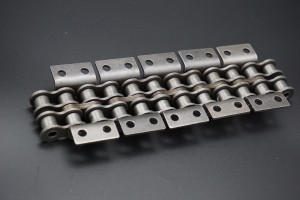Why is proper tension important? Pro
per tensioning of roller chains is critical for a number of reasons. First, it ensures optimal power transmission by preventing slippage between the chain and sprocket teeth. Second, it extends the life of the chain by reducing excessive stress and wear on the links and components. Third, it minimizes the need for maintenance, which increases efficiency and reduces downtime. By mastering the technique of properly tensioning roller chains, you can increase the reliability and life of your mechanical systems.
Step-by-step guide to properly tensioning roller chains
1. Determine the correct tension: First, consult the manufacturer’s specifications or maintenance manual for the recommended tension range for your particular roller chain. This information is critical because different applications may require different levels of tension.
2. Position the chain in place: Make sure the roller chain is properly seated on the sprockets. Make sure there are no misalignments or twists that could affect tensioning accuracy. Also, make sure you have the proper amount of slack before tensioning.
3. Use a tensiometer: To measure tension accurately, consider purchasing a quality tensiometer. Hold the gauge at the midpoint between the two teeth on the lower chain of the chain. Apply a load to the chain so that it is taut but not too tight.
4. Adjust Tension: To tension the chain, loosen or tighten the chain tensioner according to the manufacturer’s instructions. Some mechanisms may involve manually adjusting or adding/removing linkages to achieve the desired tension.
5. Re-check the tension: After adjusting the tension, re-check with a tensiometer. Repeat the adjustment process if necessary until the desired tension falls within the recommended range.
6. Test flexibility: To make sure the chain is not too tight, grab the chain at two points and try to bend it sideways. Usually a slight movement or deflection is required. If the chain is too stiff or too loose, readjust the tension accordingly.
7. Lubrication and Inspection: After proper tensioning, apply the recommended lubricant to the chain and run it for a few laps. This will help distribute lubrication and confirm good system operation. Inspect the chain for any signs of unusual wear, misalignment, or damage during the process.
Proper tensioning of roller chains is a critical aspect of overall maintenance, ensuring optimum functionality and longevity of mechanical systems. By following our step-by-step guide, you can tension your roller chain with confidence and prevent potential problems caused by under- or over-tensioning. Remember to check and lubricate your roller chain regularly to maintain its performance. This proactive approach to maintenance will save you time, money, and potential downtime in the long run. Master the art of properly tensioning roller chain and your equipment will thank you with reliable, efficient operation.
Post time: Jul-26-2023

